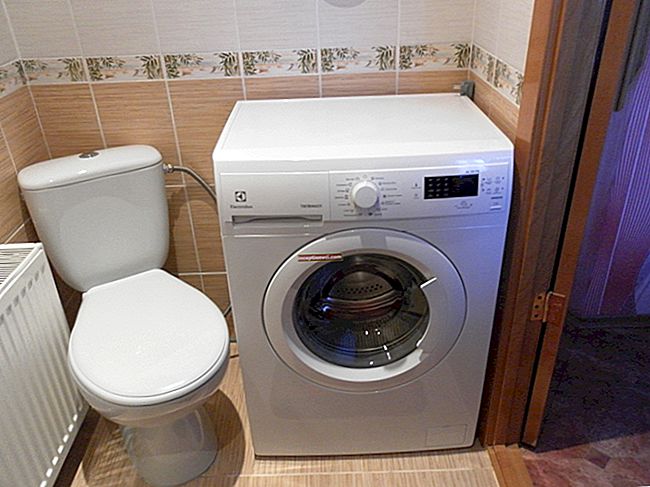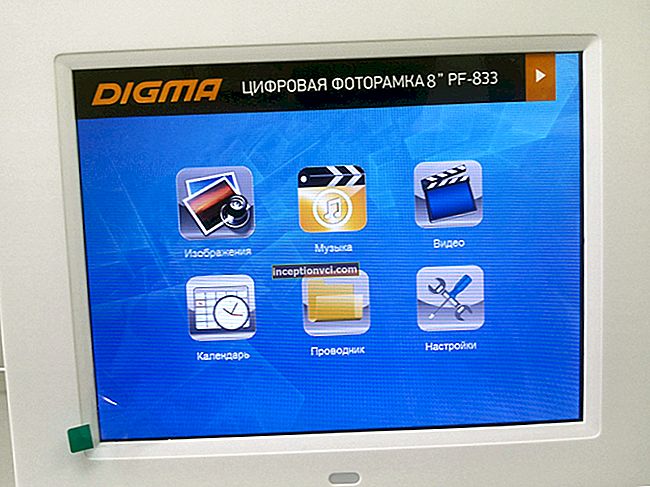It looks like the situation with real 3D images for a home computer is really changing rapidly. Big players like Nvidia and Samsung have gone a long way in this field.
Until recently, one could only be skeptical about the existing technology for creating three-dimensional stereoscopic images at home. There were several such products from several companies. They were sold at high prices and were popular only with a very limited number of customers. This may change as large firms take an interest in stereoscopy.
Different approaches to stereoscopy
The principle of stereoscopic vision is simple, but difficult to implement at the technical level. It is necessary to show each eye a separate picture, as the eyes look at the object from different points of view. The rest will be built and calculated in the human brain.
However, it is not easy to implement this idea. Currently, there are a number of different ways to show different images to the left and right eyes, we hope that there will be more such technologies in the future.
Unlike audio equipment, you will not achieve a stereoscopic effect if you place two monitors in front of you. The eyes usually focus on one point in real space, and therefore it is difficult to look at the left and right monitors with the left and right eyes, respectively. Well, you can get your eyes to concentrate, at some point in space, so that the images displayed on the monitors coincide, but this method requires preparation and will not work at all for some people. In addition, such eye strain in this way can only be used to view special stereoscopic photographs. You can try this method at home using photos from the internet. Although there are even special glasses that are offered to facilitate such viewing of stereoscopic images, the method is not attractive to everyone due to its low versatility. Plus, it requires more than two monitors!
It would be logical to have only two displays in front of your eyes. This principle is implemented by virtual reality helmets. The VR headset includes massive glasses with small screens instead of lenses - one screen for each eye. The optical system is installed in front of the screens to visually move the image away from the eyes - the user does not have to focus his vision on the tip of his nose.
This system is ideal for dividing frames into left and right eyes, since the two screens are completely independent of each other, but such VR glasses are very technically complex. A tiny screen must have good resolution (since the eye perceives it as a large screen viewed from a distance of 2-3 meters, so the graininess of the image is quite noticeable), and the electronics must be compact and light. Otherwise, the user's neck will be under a lot of stress after watching a 2-hour movie, or the glasses will slide down from their head due to their own weight. As a result, VR glasses are expensive. You won't even get a 640x480 resolution for $ 200. And with 1024x768 or higher, VR glasses will cost several thousand dollars. With these parameters, these devices are good for DVD-quality movies, but not quite suitable for games, and completely unsuitable for office applications. They can be interesting as an addition to a portable video player for watching movies when you have to travel by plane, but it's too early to talk about home use: the younger models have poor picture quality, while the older models come at unreasonably high prices.

Vuzix VR920 VR glasses: 640x480 for $ 400
But, as technology is constantly improving in the field of electronics, and especially regarding LCD and OLED panels, VR glasses will become cheaper. Maybe we'll end up seeing models with a fairly high resolution (at least about 1280x800 Full-HD) for a reasonable price.
The third and much more popular method of stereoscopy is the use of anaglyph glasses, the lenses of which are colored filters - usually red and blue.

Images prepared for such glasses appear to be double without them. But with glasses, each eye will see its own special picture, because the red lens does not allow blue light to pass through, and the blue lens, accordingly, does not allow red light to pass through. This is enough for the brain to build a real 3D image.
Good features of anaglyph technology are the use of a single display for displaying video of a series, in a rather simple preprocessing of visual content, in a low cost of glasses. Made from a piece of cardboard with a couple of celluloid filters, the glasses are cheap and can even be included on a movie ticket or DVD, with little impact on the overall price. This has made anaglyph technology widespread in theaters that show 3D films.
Of course, color fidelity suffers from the color separation of the left and right frames. Anaglyph glasses cannot reproduce saturated colors because one eye cannot see blue while the other eye cannot see red. And both eyes cannot see green well. In addition, diopter correction of one of the lenses is required to look at the monitor. Otherwise, the left and right eyes will see the picture in a different color and with a changed focus, otherwise the image will decrease in sharpness. Thus, this technology is simple, but it cannot be perfect.
Polarizing glasses are another method of image separation. The human eye is not sensitive to the polarization of light, so if the same display device is used at the same time to display photographs for the left and right eyes with different polarizations, and if you wear glasses with different orientations of polarizers instead of lenses, your eyes will not experience any harmful impacts, but will see a three-dimensional image. Polarizers are quite cheap, so glasses cost about the same as anaglyph glasses, but do not affect color reproduction.
It is quite easy to reproduce visual content for such glasses in a movie theater. You take two projectors working at the same time, with polarizers in front of each. And you project the image on a metallized screen that does not change the polarization of the reflected light. One projector displays a movie with visual content for the left eye and another projector for the right eye. Visitors are given special glasses for watching a 3D movie. This technology is used in IMAX cinemas.
But it is problematic to use this technology at home, because one projector itself is quite an expensive thing. Therefore, developers have to come up with some other ways to use the polarization of light.
Zalman offers the Trimon series of monitors that have a special film on the screen that makes the odd and even lines on the screen polarized in different planes. As a result, if you wear polarized glasses, your left eye will see some lines while your right eye will see others. Then, you only need to process the content to obtain two alternating images, and display them simultaneously in order to obtain a stereoscopic effect.
The advantages of this technology are obvious: cheap glasses (which means you can buy multiple pairs to watch movies with the whole family), normal color reproduction, reasonable price of the system in general, and the ability to use the monitor for everyday work. Alas, Zalman failed to make the Trimon suitable for such an application.When in 2D mode the Trimon acts like a regular 1680x1050 monitor, the additional polarizing film is quite noticeable: the screen seems to be covered with thin horizontal lines that get in the way and distract. In addition, the monitor only operates at half the vertical resolution in 3D (each eye sees a 1680x525 image), and the viewing angles are very limited.
Most importantly, this technology is the property of Zalman. For now, you can only choose one of the two available models that differ in screen size. And the Trimon series monitors are far from perfect in terms of design and installation, which is quite a serious drawback.
The developers at iZ3D offer another version of this technology: a monitor with two sandwich-like matrices. The lower array reproduces the combined images for the left and right eyes, while the upper, simpler array rotates the plane of polarization to give each eye the required amount of light. The IZ3D monitor should be used with a pair of cheap passive polarized glasses.
Unlike Zalman's Trimon, iZ3D runs at full 1680x1050 resolution in each mode. It has no horizontal lines on the screen and its viewing angles are much wider. Therefore, it seems to be a more promising technology than Trimon. However, iZ3D has its drawbacks. The production cost of such monitors is high due to the dual matrix, and the second image matrix degrades sharpness in 2D mode. And, most importantly, this technology is supported by only two models of the same company, making the purchase choice very limited.
Thus, one of the most important disadvantages of stereoscopic monitors from Zalman and iZ3D is marketing rather than technical. By choosing one of these technologies, you will have to buy a monitor from the respective company whether you like it or not. Considering the modest design and low quality of customization of the products of both companies, this means that you are faced with the choice between playing games in true 3D and working on a really good monitor.
But even at the end of the last century, there were technologies that made it possible to reproduce high-quality stereoscopic images on almost any monitor. Its most famous implementation was ELSA's 3D Revelator glasses, which had LCD louvers instead of lenses with the ability to change their transparency, darker or lighter, as required.
The essence of the technology is quite simple. The monitor operates at a refresh rate of 120 Hz, displaying frames for the left and right eyes alternately. The user can then put on the LCD shutter glasses, the lenses of which are closed alternately. As a result, each eye will see 60 frames per second.
Although the most notable implementation, ELSA 3D Revelator has not gained widespread acceptance. This device was inconvenient and had many hardware and software problems. It does not support popular 3dfx 3D accelerators and was officially designed only for custom-made ELSA video cards.
In the years that followed, this technology was almost forgotten. CRT monitors became extinct like dinosaurs (they have something in common in terms of size and weight), whereas newer LCD monitors cannot support refresh rates higher than 60Hz. (Each eye will only see the 30Hz refresh rates in the LCD shutter glasses, resulting in a lot of flickering.)
This situation has changed recently. LCD monitors are evolving to allow 120Hz refresh rates.
Today we're taking a look at Nvidia's new LCD shutter glasses that should be used with 120Hz monitors and GeForce graphics cards. But unlike technology from Zalman, iZ3D and ELSA, they can be enabled with any 120Hz monitor and any graphics card with an NVIDIA GPU.
A Closer Look at Nvidia GeForce 3D Vision

The glasses come in a medium-sized box painted in Nvidia's corporate colors. You can see the device on the left side through a transparent window. It looks like regular glasses with large lenses.

The box has an original folding design. Opening it, you can find a pair of 3D glasses, a transmitter to sync them with your computer, and a set of replacement glass covers.

The glasses are of normal design and you can even wear them outdoors without fear of being ridiculed. The ears are too wide, but one can hardly suspect that there is any electronics there, at first glance. When turned off, the lenses allow about half of the light to pass through, but it is not recommended to use the GeForce 3D Vision as sunglasses. Direct sunlight is harmful to liquid crystal lenses.

All electronics are in a small ledge on the inner left side. The glasses do not require a wired connection to operate. They are powered by a built-in lithium-ion battery and receive a sync signal from an IR transmitter.
The power on / off button and battery indicator are located at the top of the glasses. The glasses will automatically turn off after a few minutes of inactivity. They flash their lenses before doing so to remind you to turn them off.

A standard mini-USB connector is used to recharge the battery. In theory, this interface could be used to update the device's firmware, but Nvidia says the firmware will not be updated as it is unnecessary. Charging takes 3 hours. The stated battery life is 40 hours.
The glasses are light. The weight of the electronics is not felt when you are wearing them. The obvious disadvantage is that you cannot combine them with regular glasses for correcting vision. Passive polarized glasses from Zalman and iZ3D can be used as lenses, but Nvidia glasses require frames with electronics.

This problem can be partially solved with the included nasal pad (three pads of different sizes).

The 3D glasses must be synchronized with the computer to darken the left or right lens at the same time as the frame changes on the monitor. This is done using an infrared transmitter that is guaranteed to work up to 5 meters away. It looks like a small black plastic pyramid. The transmitter must be in line of sight with the goggles.
The computer and the device communicate unidirectionally, so you can use as many 3D glasses as you need from one transmitter - all glasses will receive the same signal. It is not yet possible to buy glasses separately from the transmitter, but Nvidia promises to provide this option in the future.

The transmitter has a mini USB connector for connecting to a computer, a 3D-Sync connector for TVs that support GeForce 3D Vision Technology (Mitsubishi DLP models are listed as such; you do not need this connector when using glasses with a regular monitor), and a scroll wheel for 3D depth adjustments. Although you can change various parameters, including the depth of 3D space, with a hotkey, the wheel is more convenient: you don't have to remember the meaning of hotkeys, and they may not work in some games.
GeForce 3D Vision requires an LCD monitor that supports 120Hz refresh rates, a Mitsubishi DLP TV (see Nvidia's website for a list of models), other 3D-Ready DLP TVs, or DepthQ projectors. The list of compatible displays will expand significantly in the coming months, and this is one of the strengths of GeForce 3D Vision technology.
Unfortunately, many modern LCD TVs that are listed as having a 120Hz refresh rate can only receive 60fps and are not compatible with GeForce 3D Vision as a result. Hopefully this flaw will be corrected by the manufacturers soon. At least they have a good incentive to do so now.
The stereoscopic technology is compatible with all more or less modern Nvidia gaming graphics cards starting with the 8800 GT and 9600 GT.This is due to the fact that you will not be able to get sufficient speed on weak video cards - the load on the graphics subsystem doubles when you turn on the stereo mode. Both single and dual-chip cards support stereo, including dual-card SLI configurations.
There are no other critical hardware requirements.
Driver interface and functionality
GeForce 3D Vision ships with separate stereo drivers. The driver is designed for Windows Vista. Windows XP is not officially supported. The driver works in 32- and 64-bit versions of the OS.
Currently, 3D applications can run with glasses in full screen mode, but only Nvidia promises to provide such support in windowed mode.
When installing the Nvidia driver, a new stereoscopic tab appears in the control panel. There you can set the depth of the 3D space (which can also be adjusted with the wheel on the IR transmitter) and select the monitor to use. The driver also supports anaglyph glasses. Of course, you don't need a 120Hz monitor for this kind of viewing.
You can change the in-game stereo settings using hotkeys. If the 3D space looks uncomfortable, or you are having trouble focusing your eyes, or moving them between objects, your eyes are tired after 15-20 minutes of playing, you should try changing the settings.
You can enable laser sight in supported games. Normal gaze doesn't work very well with true 3D and may not be in the right place when you turn on stereoscopic mode, making aiming difficult.
A list of officially supported games can be found in a separate window. The quality of the stereo effect is shown on a scale of three, and there are comments for some specific games. If the game is not listed, you can still try using stereo mode in it. The game just hasn't been tested and rated by Nvidia yet.
Nvidia is one of the two major GPU manufacturers, hopefully game developers will certainly take stereo technology into account when working on their new projects.
Stereo implementation
So far, the quality of this mode depends on how correctly the distances and proportions of 3D scenes are implemented in a particular game.
Games based on the Source Engine (developed by Valve Software) and Cry Engine (from Crytek) have correct 3D scenes. The effect is impressive in Left 4 Dead, buildings, objects and characters are so real that you want to reach out and touch them. The only drawback was fuzzy artifacts in bright spots of light when walking with a flashlight.
There was a fuzzy effect in the Prince of Persia. While this game has a high compatibility level on Nvidia's list, it doesn't feel deep stereoscopic due to the specific contours around the symbols. The brain perceives symbols as just drawn, not three-dimensional. You can focus on photography to see the third dimension, but once you relax, the game world becomes flat again.
The perception of the stereo mode in strategy also depends on the specific game. If there are some labels for units (for example, labels showing the block size in Heroes of Might and Magic), they will end up hanging somewhere between you and the block, which is inconvenient. The developers of the game obviously did not think about any stereo modes and did not assign a specific depth to such an element. But the rest of the game world looks just great. You will get the feeling that a tiny real world is in front of you, with tiny factories and tiny tanks. Sometimes you catch yourself wanting to just take the tank with your fingers and move it on the map where necessary.
There was no noticeable doubling or ghosting causing the left eye to see residual images for the right eye (this effect could be seen on the iZ3D monitor and is really annoying).
It is assumed that the lenses in the shutter glasses are switched on alternately.When one becomes transparent, the other is opaque, and vice versa. Such fast switching is not a problem for simple liquid crystal glass, but can be a problem for LCD monitors. The 120Hz SyncMaster 2233RZ provides an average of 3 milliseconds to switch between semitones. This means that if the lenses are turned on instantly, one eye will see the remnants of the image intended for the other eye for an average of 3 milliseconds. There are also RTC artifacts that take even longer to disappear.
To test the problems in Nvidia's solution, we measured the lens switching process by placing an image sensor connected to an oscilloscope on one side of the glasses and a light on the other side. A high signal level on the oscillogram corresponds to the period of time when the glasses are semi-transparent.

As you can see, the lenses are translucent for only 2 milliseconds every 16.7ms. That is, most of the time the lenses of the 3D glasses are closed, and the monitor has 6.3 milliseconds (because the frames go at 120 Hz, that is, one frame every 8.3 milliseconds) to change the picture.
Unfortunately, such a low duty cycle (with a short transparency period and a long opacity period) results in 60Hz flicker. The perception of flicker varies from person to person. Some people may not notice it and others will have sore eyes, but the flicker is really noticeable.
Flickering is less noticeable with dynamic visual content like games and movies (we watch 50Hz CRT TVs, for example), and the glasses turn off when you exit a 3D app.
To reduce flickering, nVidia recommends setting your monitor to maximum brightness when playing games (lamp backlights do not flicker at their maximum value, which can save you from possible brightness ripple due to overlapping two frequencies) and try to avoid fluorescent lamps with electromagnetic ballasts that flicker on twice the frequency of the mains.
In addition, the glasses significantly reduce the intensity of the light, making the surroundings dull. Therefore, the monitor must have good brightness. Thus, you can play normally even in good daylight.
Nvidia 3D glasses do not adversely affect monitor color reproduction or viewing angles.
Conclusion
The main reason you can be confident in the future success of GeForce 3D Vision glasses is that they are compatible with graphics cards and monitors from different manufacturers. Unlike competing technologies like Zalman Trimon and iZ3D, you don't have to compromise with two monitor models that differ only in screen size and have an unassuming exterior design. Even today, two major monitor manufacturers Samsung and ViewSonic have introduced GeForce 3D Vision compatible products. This means that Nvidia has found understanding among the first echelon of manufacturers, and we will certainly see such monitors from other brands, especially since there is nothing technically difficult in their design and manufacture.
As has been discussed many times, 120Hz models are quite interesting monitors in and of themselves for gamers as well as regular users. In addition to being compatible with stereo glasses, their 120Hz refresh rate provides excellent smoothness and significantly reduces visual artifacts along with fast response times.
Thus, it is quite possible that in a few years many users will be using GeForce 3D Vision compatible monitors without any stereoscopic glasses. It's like the sound controllers that are now included with every motherboard. You may not think about sound when buying a motherboard. But when you need to listen to music, you only need to plug your speakers into the output without having to upgrade / replace half of your computer.
Finally, GeForce 3D Vision technology is compatible not only with monitors, but also with TVs and even projectors.While there are several such models available today, manufacturers will be able to provide stereo support quite easily. 120Hz LCD monitors have been around for a long time, and widespread adoption will require only a small electronics upgrade. Just imagine a true 3D image on a 40- or 50-inch screen, what competing technologies can match that?
Stereoscopic glasses are only available from Nvidia today, but this is not the company's policy of promoting turnkey solutions under its own brand. Therefore, the production and sale of glasses will soon be offered to third parties under license.
As far as the quality of stereo support in various games is concerned, Nvidia's position in the gaming world is encouraging. The company has an impact on game developers and has extensive experience working with them.
And what is the price factor? Well, the MSRP for glass is $ 200. A 22-inch monitor from Samsung will cost $ 400. That's about the same price as competing products from iZ3D and Zalman, but the latter are obviously inferior in performance. So, Nvidia does not look like a profitable solution in only one case: if you want to buy several pairs of glasses. Even when the 3D glasses start selling without a transmitter, they are unlikely to be less than $ 150.
Pros:
Compatible with 120Hz monitors, TVs and projectors from any manufacturer
Monitors with support for stereo mode outperform older 60 Hz models even in 2D mode
Compatible with all graphics cards with Nvidia GPUs starting from 8800 GT
Work at any screen resolution is supported by the monitor
Full monitor resolution available in stereoscopic mode
No problem with color accuracy
Stereo viewing angles are the same as 2D
No doubling of the image in stereo mode
Several pairs of glasses can be used at the same time
Minuses:
Quite high price
Noticeable flicker at 60 Hz
No compatibility with AMD / ATI GPUs.









